The Strategic Management Analysis of ZARA
Added on 2021-06-07
64 Pages16204 Words1069 Views
STRATEGIC MANAGEMENT PAPERZARACreated By:Anggita Sulisetiasih1006718706Kenji Wibawa Junardy1006718990Patricia M. A. Adam1006805694International Undergraduate ProgramFaculty of EconomicsUniversity of IndonesiaDepok 2013
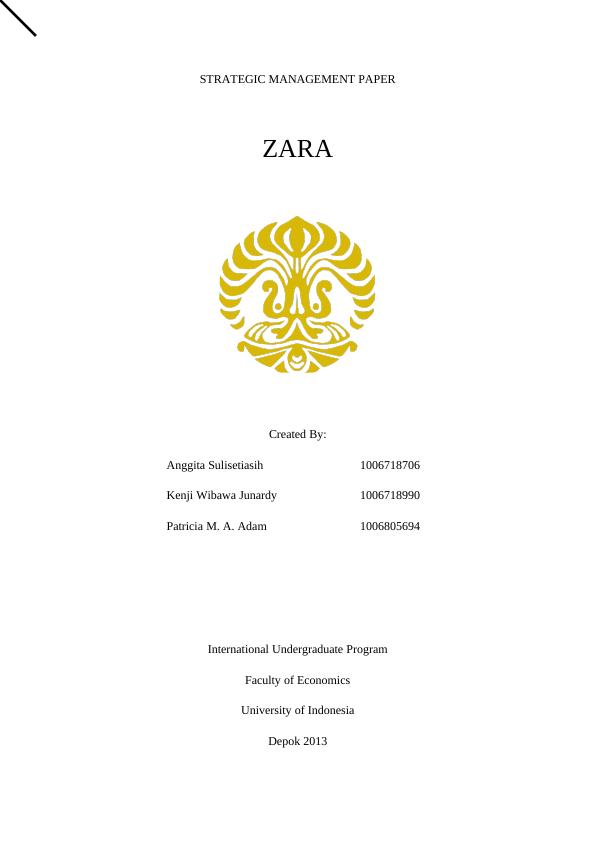
2TABLE OF CONTENTSChapter 1....................................................................................................................................4INTRODUCTION......................................................................................................................41.1.Company Background.................................................................................................41.2.Vision and Mission......................................................................................................41.3.Long-term Objectives..................................................................................................5Chapter 2....................................................................................................................................6VISION – MISSION ANALYSIS.............................................................................................62.1.Importance (Benefits) of Vision and Mission Statements...........................................62.2.Characteristic of a Mission Statement.........................................................................72.3.Mission Statement Components..................................................................................82.4.Vision and Mission Relation: Is It Achievable?............................................................10Chapter 3..................................................................................................................................11EXTERNAL ASSESSMENT..................................................................................................113.1Michael Porter’s Five-Forces Model.........................................................................113.2External Factor Evaluation (EFE) Matrix.................................................................133.3Competitive Profile Matrix........................................................................................15Chapter 4..................................................................................................................................19INTERNAL ASSESSMENT...................................................................................................194.1Resource-Based View Analysis.................................................................................194.2The Internal Factor Evaluation (IFE) Matrix............................................................224.3Financial Analysis.....................................................................................................27Chapter 5..................................................................................................................................33STRATEGIES IN ACTION....................................................................................................335.1The Strategies............................................................................................................335.2Michael Porter’s Five Generic Strategies..................................................................34Chapter 6..................................................................................................................................36STRATEGY ANALYSIS AND CHOICE...............................................................................366.1The Strengths-Weaknesses-Opportunities-Threats (SWOT) Matrix........................366.2The Strategic Position and Action Evaluation (SPACE) Matrix...............................376.3The Boston Consulting Group (BCG) Matrix...........................................................396.4The Internal-External (IE) Matrix.............................................................................40
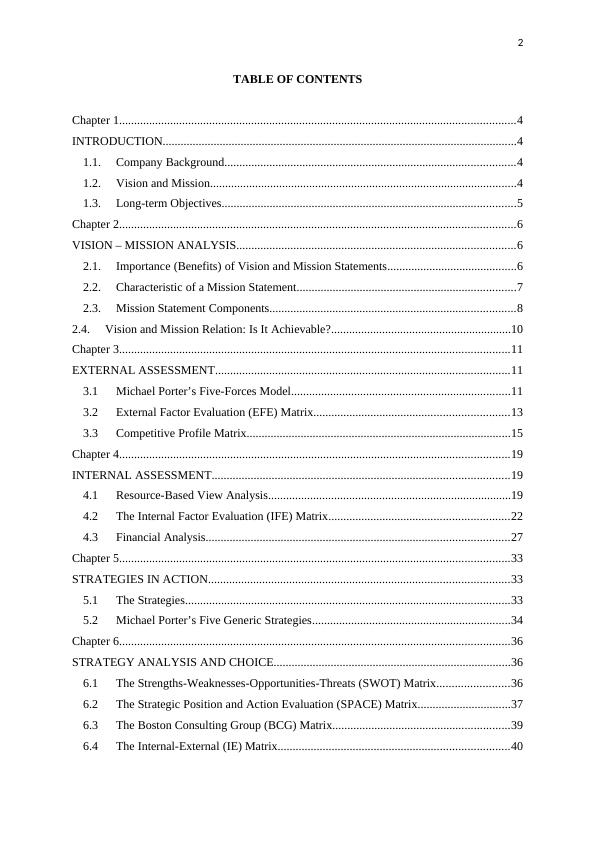
36.5The Grand Strategy Matrix........................................................................................416.6The Quantitative Strategic Planning Matrix (QSPM)...............................................44Chapter 7..................................................................................................................................46IMPLEMENTING STRATEGIES: MARKETING, FINANCE/ACCOUNTING, R&D, ANDMIS ISSUES............................................................................................................................467.1Marketing..................................................................................................................467.2Finance......................................................................................................................497.3Research and Development (R&D)...........................................................................497.4Management Information System.............................................................................51Chapter 8..................................................................................................................................53STRATEGY EVALUATION AND GLOBALIZATION CULTURE...................................538.1The Balanced Scorecard............................................................................................538.2Globalization Culture................................................................................................56Chapter 9..................................................................................................................................59CONCLUSION........................................................................................................................599.1Zara’s Competitive Advantage..................................................................................599.2Vision, Mission, and Strategies.................................................................................60BIBLIOGRAPHY....................................................................................................................62
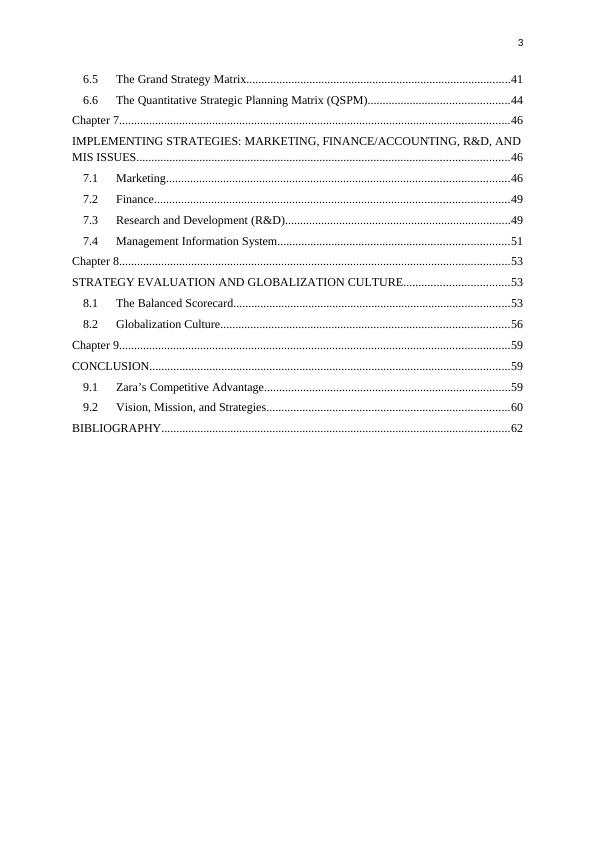
4Chapter 1 INTRODUCTION1.1.Company BackgroundZara is a Spanish brand of clothing founded by the visionaryAmancio Ortega Gaona and Rosalia Mera in Artexio, Galicia.Zara was founded in the year 1975. It is one of the majorselling brands of one of the biggest fashion retailer"INDITEX". Zara is now available in 86 countries with total of1,763 stores worldwide. Inditex itself is a huge fashion retailer company which owns 8brands namely Zara, Pull &Bear, Massimo Dutti,Bershka, Stradivarius, Oysho, Zara Home and lastbut not the least Uterque. Amancio Ortega is thefounder of Inditex, which was established in 1963.Amancio Ortega adapted unique business model,which were innovative and flexible. This madeInditex one of the biggest retailers in the world. In1975 Inditex established Zara’s first store indowntown A Coruna, Spain. Zara offers fashionable designs for men, women, and kids. Theyalso sell accessories to complete their product lines.1.2.Vision and MissionThe company’s vision as stated on the website: “Zara is committed to satisfying thedesires of our customers. As a result we pledge to continuously innovate our business toimprove your experience. We promise to provide new designs made from quality materialsthat are affordable”.Zara states that its mission is that “Through Zara’s business model, we aim tocontribute to the sustainable development of society and that of the environment with whichwe interacts”.
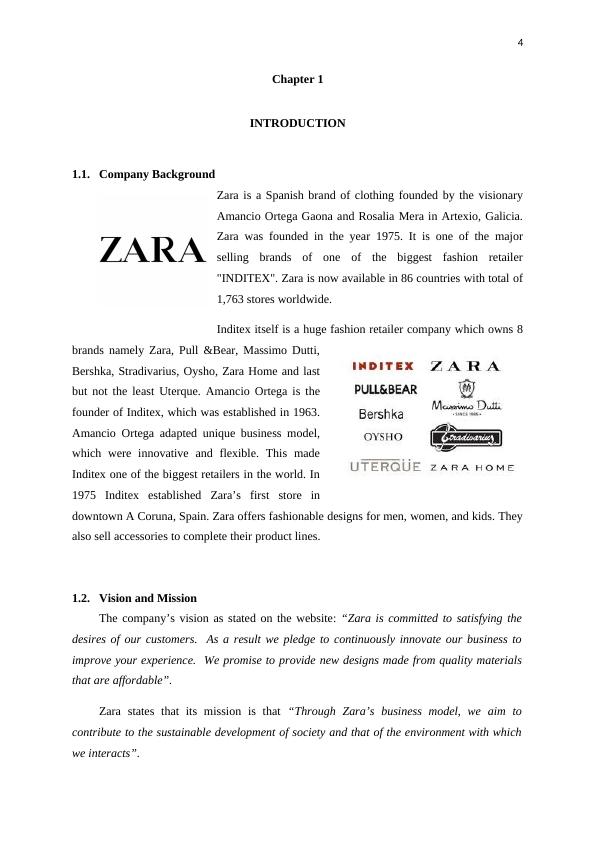
51.3.Long-term ObjectivesThe company states on their website the following as their objectives in the long-term:1.Save energy, the eco-friendly store: They are implementing an eco-friendlymanagement model in their shops in order to reduce energy consumption by 20%,introducing sustainability and efficiency criteria. This management model sets outmeasures to be applied to all processes, including the design of the shop itself, thelighting, heating and cooling systems and the possibility of recycling furniture anddecoration.2.Produce less waste and recycle: Zararecycles their hangers and alarms, which arepicked up from their shops and processed into other plastic elements. This is anexample of their waste management policy. Millions of hangers and alarms areprocessed each year and both the cardboard and plastic used for packaging are alsorecycled.3.Their commitment extends to all their staff, increasing awareness among theteam members: The Company holds In-company awareness campaigns and specificmultimedia-based training programs to educate their staff in sustainable practices,such as limiting energy consumption, using sustainable transport and modifyingbehavior patterns.4.Use ecological fabrics, organic cotton: Zara supports organic farming and makessome of its garments out of organic cotton (100% cotton, completely free ofpesticides, chemicals and bleach). They have specific labels and are easy to spot in theshops.5.Use biodiesel fuel: Zara’s fleet of lorries, which transport more than 200 millionitems of clothing a year, use 5% biodiesel fuel. This allows them to reduce their CO2emissions by 500 tons.We can see from the objectives that Zara is aiming to be an environmental-friendlycompany. It is their top priority at least until the year 2020.

6Chapter 2 VISION – MISSION ANALYSIS2.1.Importance (Benefits) of Vision and Mission StatementsZara clearly has a formalized mission statement and they are currently striving toachieve their mission through strategies implemented though their objectives in long-termperiod. According to King and Cleland, taken from Fred David’s Strategic Managementbook, it is said that there are six benefits of having carefully-developed mission statement: 1.To ensure unanimity of purpose within the organization2.To provide a basis, or standard, for allocating organizational resources3.To establish a general tone or organizational climate4.To serve as a focal point for individuals to identify with the organization’spurpose and direction, and to deter those who cannot from participating furtherin the organization’s activities5.To facilitate the translation of objectives into a work structure involving theassignment of tasks to responsible elements within the organization6.To specify organizational purposes and then to translate these purposes intoobjectives in such a way that cost, time, and performance parameters can beassessed and controlledIn case of Zara, their mission statement clearly and firmly emphasizes their purpose,which is to be an environmental-friendly company and contribute to society development.Their purpose is also their base in making allocation to their resources in which we know thatZara allocates more on creating an eco-friendly operations and boosting its supply and valuechain other than spending for marketing campaigns. The mission statement, combined withits corporate culture, somehow produces a conducive organizational climate for achievingtheir objectives. Moreover, since the mission statement is very clear and direct, it is easier for theemployees to set their mindset and behavior to be aligned with the company’s objective. Inother words, employees know what they should do, how they should do it, in order to achievethose objectives. Finally, Zara as a determined company, with the purposes of being a fast
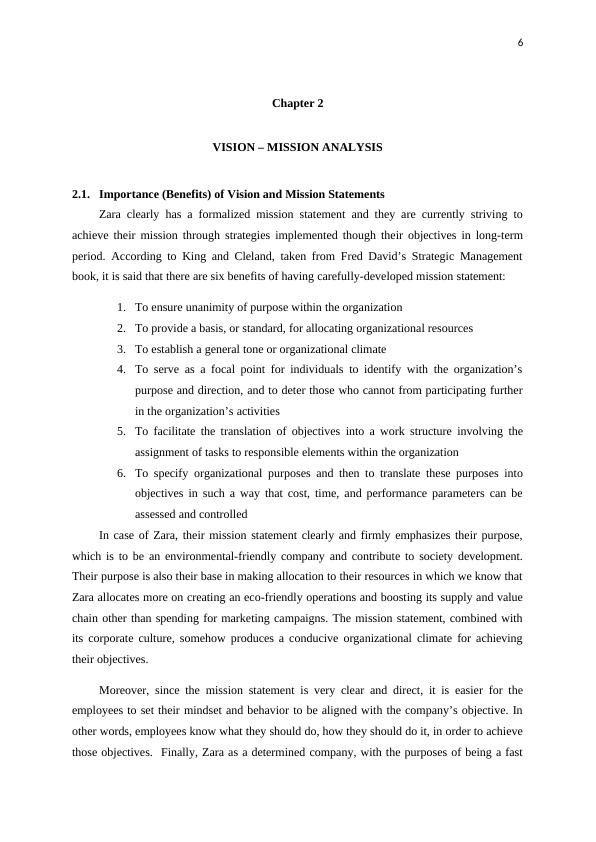
7fashion company that concern its environmental-friendliness, combined with their long-termobjectives that are derived from their mission statement, create somewhat a clear standard oftheir cost, time, and performance assessment, and it has been working well so far.2.2.Characteristic of a Mission StatementA Declaration of AttitudeA mission statement is more than a statement of specific details; it is a declaration ofattitude and outlook[ CITATION Dav13 \l 1033 ]. A good mission statement sets the company’sobjectives and strategies without limiting the management’s creativity. It also needs to bebroad enough to reconcile the stakeholder’s differences. Moreover, a good mission statementindicates the relative attention that the organization/company will devote to; it reflectsjudgments about future growth directions and strategies that are based upon forward-lookingexternal and internal analysis.In case of Zara’s mission statement, based on what is stated on the website and quotedon this paper, it is said that through its business model, Zara aims to contribute to societydevelopment and environment sustainability. That is their objective and the attention thatthey devote to. Zara states that an eco-friendly company is what their direction is, other thanfulfilling their consumer’s fashion needs. Furthermore, Fred David on his book summarizes nine Characteristics of a MissionStatement, they are:1.Broad in scope2.Less than 250 words in length3.Inspiring4.Identify the utility of a firm’s products5.Reveal that the firm is socially responsible6.Reveal that the firm is environmentally responsible7.Include nine components8.Reconciliatory9.EnduringIn Zara case, we can conclude that it is broad in scope. It clearly states their missionstatement and differentiated from their objectives, though the two are still aligned one
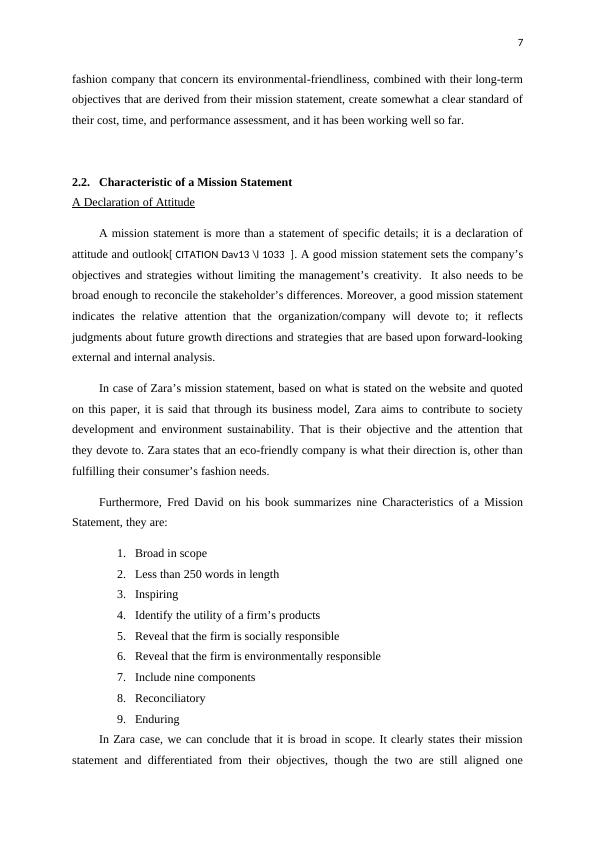
8another. The length also does not exceed 250 words. However, in our opinion, their missionstatement is too simple in order to inspire people to take actions. We think that a briefstatement of their act would be better if it is mentioned on the mission statement also.Moreover, their mission statement is too direct to the company’s direction that it does notidentify the utility of their products. However, Zara shows their emphasis on environmentaland social responsibility very well. The word ‘sustainable development of society’ on theirmission statement not only shows that they are socially responsible, but also clarifies as anenduring mission statement in term of program and actions. On the other hand, Zara’s mission statement does not completely include the ninecomponents of a Mission Statement. More of this will be discussed on the next section.Lastly, it is also not reconciliatory.A Customer OrientationFred David says on his book that a good mission statement reflects the anticipations ofcustomers. It identifies the customer’s needs and then provides a product or service to fulfillthem. Moreover, a mission statement should identify the utility of a firm’s products to itscustomers. Zara implicitly states its customer orientation by using the phrase “through ourbusiness model”. This will lead us to the explanation of Zara’s unique business model, thefast fashion. The term fast fashion, by its definition, is an expression used by fashion retailers fordesigns that move quickly from the catwalk to capture current fashion trends[ CITATIONWik132 \l 1033 ]. The designs are manufactured quickly and directly distributed to stores forend-consumers. Specifically for Zara, they claim that they only take two weeks for newdesigns to be sold at their stores, while normally it would take more than three months. Thisis a form of Zara’s quick-response for their customers who desire the latest trend of apparels.2.3.Mission Statement ComponentsZara may not state all of the 9 components on their mission statement; however, they doexplain those components on the company website.1.Customers: The customers of Zara are men, women and kids who love fashionand like to wear the latest trend of clothing and accessories in their daily life.

End of preview
Want to access all the pages? Upload your documents or become a member.
Related Documents
Strategic Marketinglg...
|23
|5913
|91
Business Strategy Report Of Zara | Generic Strategic Modellg...
|20
|4178
|1339
Strategic Management of Zara: Market Changes, Technology, and Competitionlg...
|10
|2592
|22
Strategic Planning for Zara: Vision, Mission, Stakeholder Analysis, and External Factorslg...
|12
|4349
|477
Strategic Appraisal of Zara Company: Analysis of External and Internal Environmentlg...
|21
|4179
|402
Strategic Management Analysis of ZARAlg...
|13
|3776
|45
